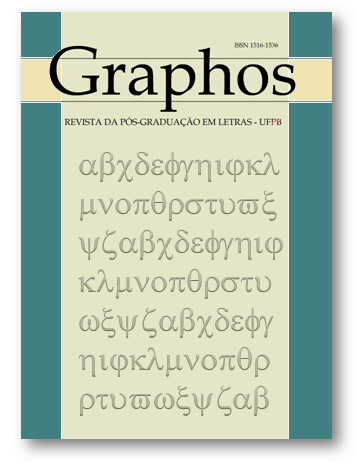O rei Artur e sua apropriação na longa duração, do rei Afonso iii, de Portugal a D. Sebastião, o Desejado
Keywords:
King Arthur, appropriation, King Afonso III, of Portugal, King Sebastian, the DesiredAbstract
From the thirteenth century on circulated in the Iberian Peninsula two accounts on the image of King Arthur which were appropriated for political purposes to strengthen the royal figure. The first was the chilvaric novel The Quest for the Holy Grail, written in French and translated to Portuguese in mid-century by order of the king Afonso III. The other was a chronic Navarre entitled Libro de las Generaciones (1270), which contained the genealogy of the Celtic kings, which highlights Arthur and his most characteristic attributes as warrior-king and a fair-king. In both works the predominance of these elements were inspired by the work Historia Regum Britanniae, wirtten by Geoffrey of Monmouth, in England between 1135 and 1138. The Historia Regum presents Arthur as an expansionist king, killer of two giants and conqueror of thirty kingdoms. These well-defined elements reappear in the narrative that circulated in the Iberian Peninsula. The positive attributes of Arthur were associated with King Alfonso III of Portugal and its chronic as opposed to his brother Sancho II, known as a "weak" king, according to the chronicles. Messianic elements of Arthur were also associated with king John I and also to his military commander Nuno Alvares Pereira. The association between Arthur and an ideal king is also connected with the image of king Sebastian, who died at the Battle of Alcazarquivir (1578). To this day, some poor people in Brazil, as the inhabitants of the Lençois Island in the state of Maranhão, still believe in d. Sebastião’s return to bring an era of prosperity and wealth, myth that is associated with the messianic character of King Arthur.
Downloads
References
BRAGA, Pedro. O Touro Encantado na Ilha dos Lençóis. O Sebastianismo no Maranhão. Petrópolis: Vozes, 2001.
CABRAL, Flávio José Gomes. Paraíso Terreal: A Rebelião Sebastianista na Serra do Rodeador – Pernambuco, 1820. São Paulo: Annablume, 2004.
CASSIRER, Ernest. Antropologia Filosófica. São Paulo: Mestre Jou, 1992.
CASTRO, Ivo. “Sobre a Data da Introdução na Península Ibérica do Ciclo Arturiano da Post-Vulgata”. In: Boletim de Filologia. Lisboa: n° 28, 1983, p. 81-98.
FARAL, Edmond. La Légende Arthuriene – Textes et Documents. Paris: Honoré Champion, 1929, 3 vols.
FERRETI, Sérgio. Encantaria Maranhense de D. Sebastião. Revista Lusófona de Estudos Culturais. Vol. 1, n.1, 2013, p. 262-285.
Disponível em: http://estudosculturais.com/revistalusofona/index.php/rlec/article/view/19 Acesso em: 01/06/2015.
FERRETI, Sérgio. O Mito e Ritos de D. Sebastião no Tambor de Mina. In: 10º Congresso Brasileiro de Folclore. Anais ... Recife: Comissão Nacional de Folclore, São Luís: Comissão Nacional de Folclore, 2004.
HERMANN, Jacqueline. No Reino do Desejado. A Construção do Sebastianismo em Portugal (séculos XVI e XVII). São Paulo: Companhia das Letras, 1998.
LAPA, Manuel Rodrigues. Lições de Literatura Portuguesa. Coimbra: Coimbra Ed., 1973.
LOOMIS, Roger Sherman. The Development of Arthurian Romance. New York: Dover, 2000.
MARQUES, Maria Alegria. “D. Afonso III, o Bolonhês”. In: MENDONÇA, Manuela (coord.). História de Portugal. Lisboa: Academia Portuguesa de História, 2010, v. 1.
MATTOSO, José. História de Portugal - A Monarquia Feudal. Lisboa: Editorial Estampa, s/d, v. II.
MEGIANI, Ana Paula Torres. O Jovem Rei Encantado. Expectativas do Messianismo Régio em Portugal, séculos XIII a XVI. São Paulo: Hucitec, 2003.
SARAIVA, A. J. e LOPES, Oscar. História da Literatura Portuguesa. Porto: Porto Ed., 1976.
SARAIVA, A.J. Crepúsculo da Idade Média em Portugal. Lisboa: Gradiva, 1988.
ZIERER, Adriana. Artur: de Guerreiro a Rei-Cristão nas Fontes Medievais Latinas e Célticas. Brathair. Revista de Estudos Celtas e Germânicos. São Luís, vol. 2 n. 1, 2002, p. 45-61.
Disponível em: http://ppg.revistas.uema.br/index.php/brathair/article/viewFile/665/588 Acesso em 20/01/2015.
ZIERER, Adriana. “Artur como Modelo Régio nas Fontes Ibéricas Medievais (Parte I): A Demanda do Santo Graal”. In: ZIERER, Adriana e CAMPOS, Luciana de (Coord). Brathair. Revista Eletrônica de Estudos Celtas e Germânicos, Edição temática Matéria da Bretanha. Rio de Janeiro, v. 3 n. 2, 2003, p. 44-61 http://ppg.revistas.uema.br/index.php/brathair/article/view/618, acesso em 10/03/2015.
ZIERER, Adriana. Afonso Henriques, D. João e D. Sebastião: o messianismo na legitimação simbólica da Dinastia de Avis. In: VIEIRA, Ana Livia B.; ZIERER, Adriana. (Org.). História Antiga e Medieval: rupturas, transformações e permanências: sociedade e imaginário. São Luís: Ed. UEMA, 2009, v. 2, p.49-74.
ZIERER, Adriana M. S. Modelos de Educativos de Nobre e de Rei na Crónica de D. João I, de Fernão Lopes. Acta Scientiarum. Education. Maringá, v. 32, n. 1, p. 55-66, 2010.
ZIERER, Adriana. Da Ilha dos bem aventurados à busca do Santo Graal: uma outra viagem pela Idade Média. São Luís: Ed. UEMA, 2013.







